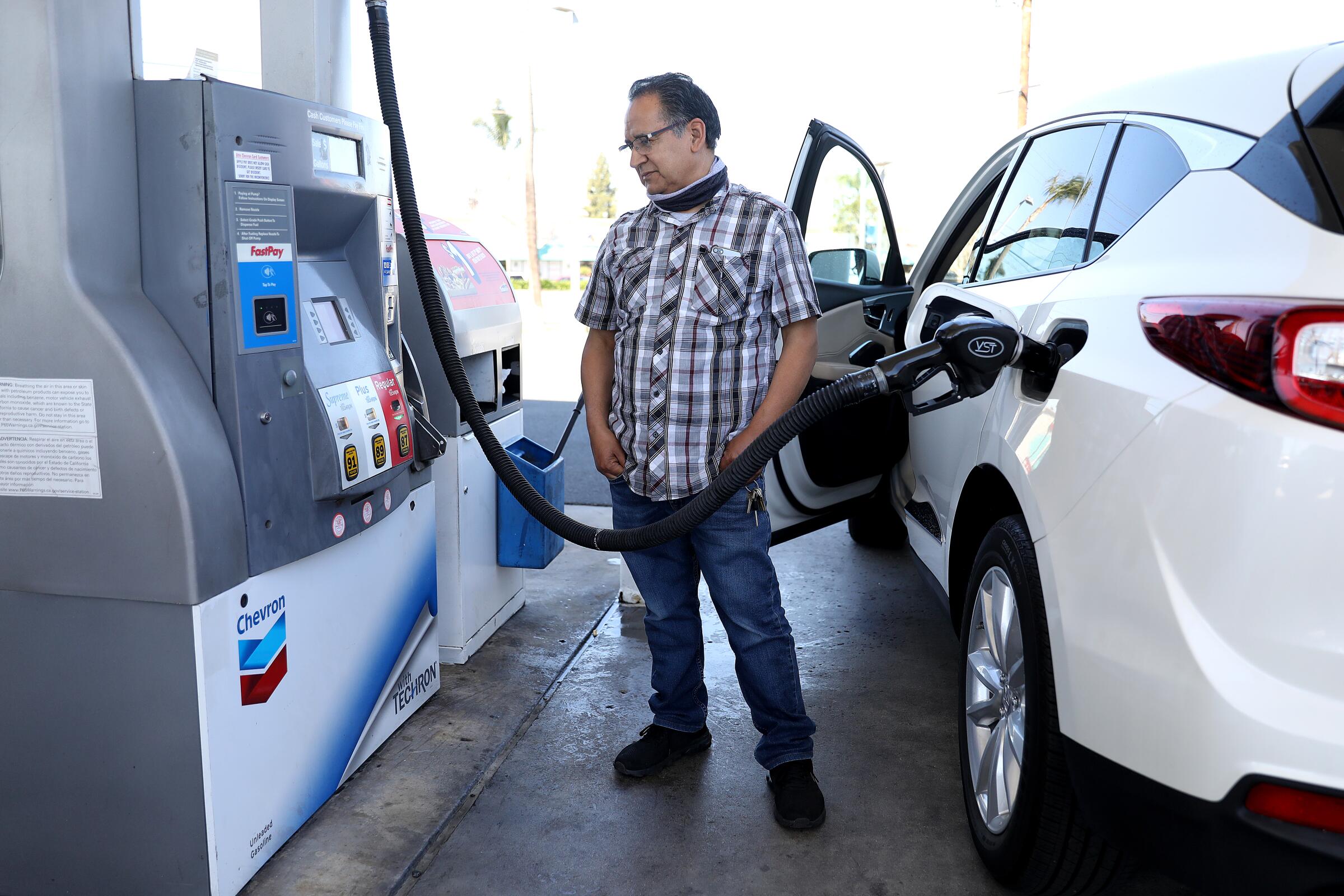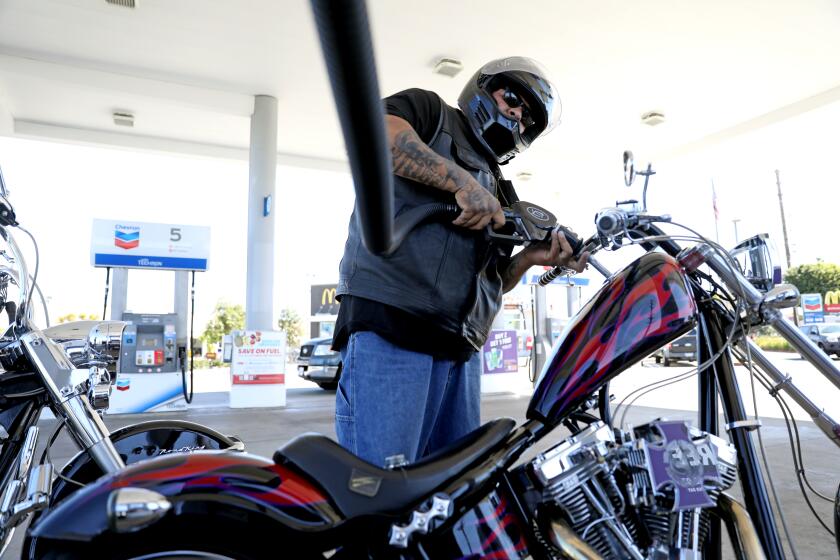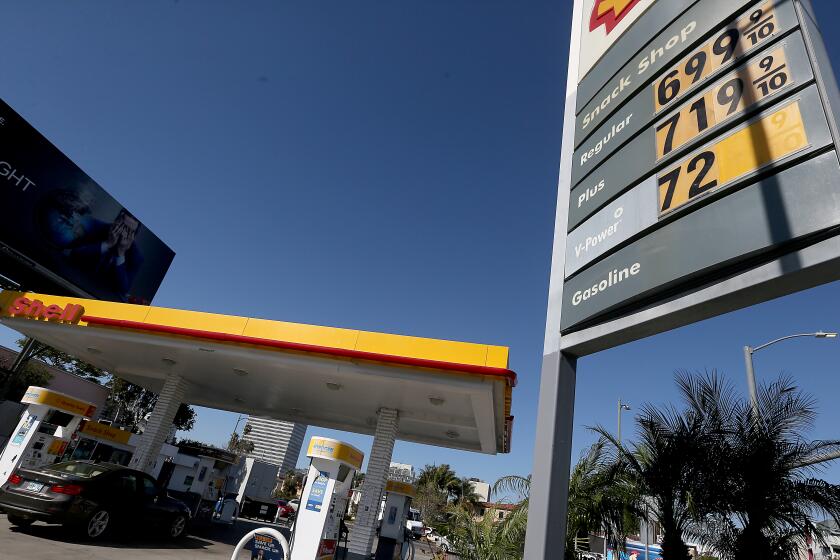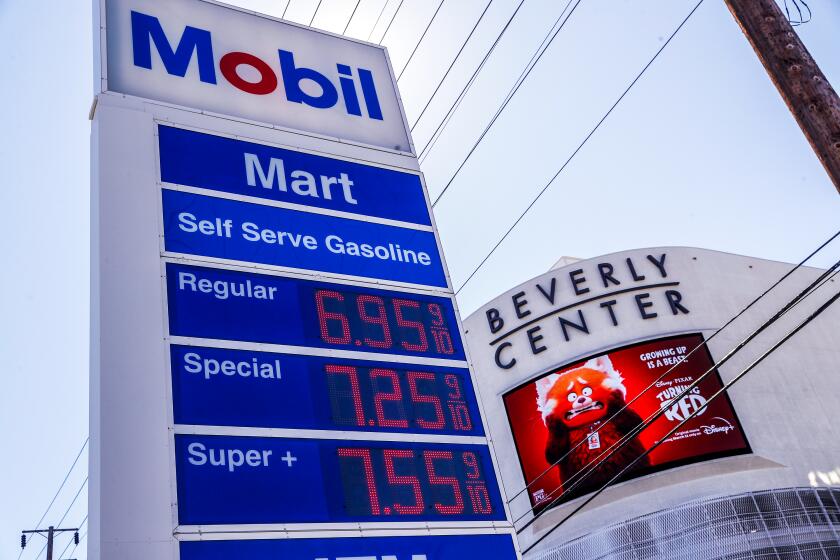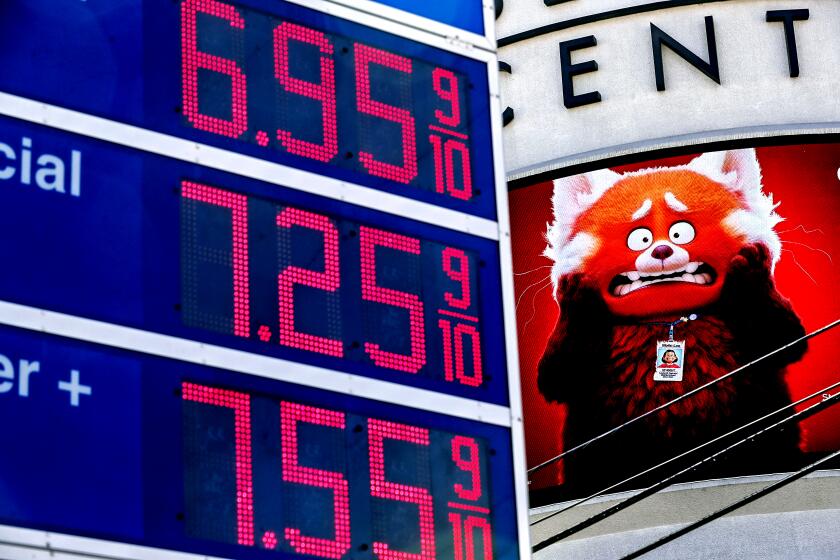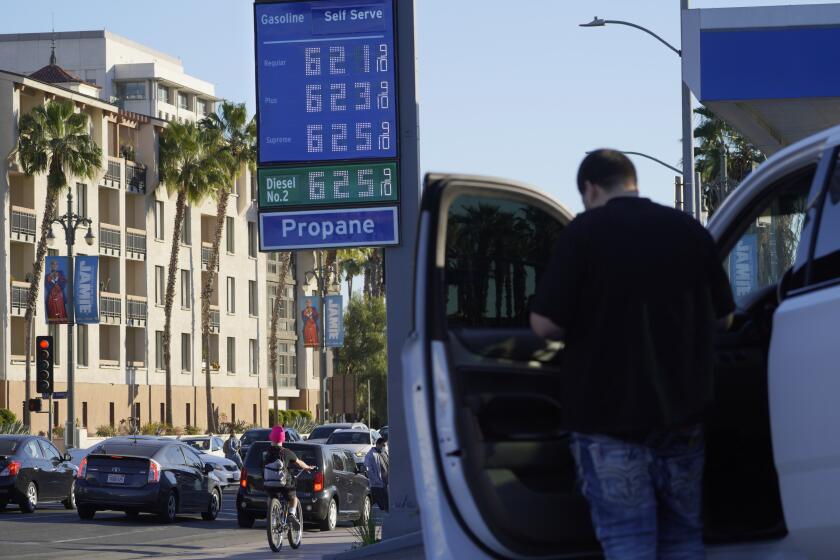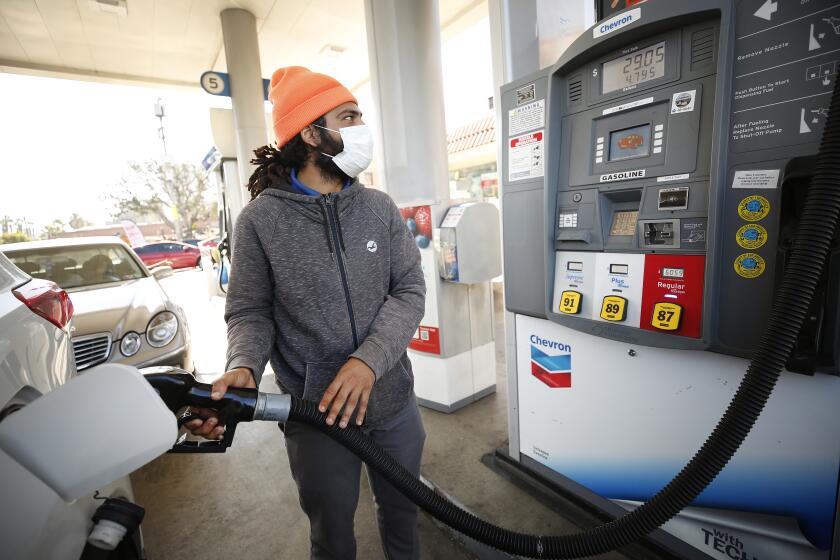Slow and steady wins the race. Years ago in my high school driver’s ed class, I watched a filmstrip (yes, I’m that old) of two cars heading across town, one driven like a maniac, the other like a Zen master. The maniac reached the destination first, but the difference was only a few minutes. The bottom line was that you won’t save much time by racing from light to light.
Worse, you’ll waste a lot of gas. Studies show that rapid accelerations and hard braking consume up to 40% more gas in stop-and-go traffic, and up to 30% more on the highway. The best strategy, AAA says, is to find a pace in sync with the lights so you can keep rolling instead of braking.
Don’t speed. You’re not going to like this, but driving faster than 55 to 65 mph on the highway is bad for your mileage, according to England’s Energy Saving Trust. And according to Consumer Reports’ tests, 55 is significantly better than 65, if you don’t mind being passed on all sides. By everyone.
Granted, Southern California highways usually clamp a governor on your accelerator, but even in those rare, glorious moments when traffic parts like the Red Sea opening, you’ll get better mileage at or below the speed limit.
Don’t leave the car idling. Do you let your car warm up a bit before driving? Cut that out. “To save fuel,” AAA advises, “start the engine and then drive the car normally to warm the engine to operating temperature more rapidly.”
And when you see a long drive-through line at your favorite take-out spot (we’re looking at you, Chick Fil-A), park the car and go inside to order. Bevacqua said idling can burn up to a quarter of a gallon per hour. At today’s gas prices, that’s more than 2 cents evaporating every minute.
You should even turn your car off at stop lights, as some newer cars do automatically. The California Energy Commission says that idling for just 10 seconds will consume as much gas as you would use turning your car off and on again. So if you’re going to be stopped for longer than it takes you to read this paragraph, you’ll save gas by turning the engine off.
Cruise control isn’t just for cross-country trips. As Motor Trend magazine explained, cruise control saves gas by preserving a car’s momentum. The standard version can be hard to use on L.A.’s clogged streets, but the latest wrinkles — adaptive cruise control, which lowers your speed automatically to keep you safely behind the car in front of you, and adaptive cruise control with stop and go, which seems purpose-built for the 405 Freeway — can be a gas-saving asset. A 2019 study by Volvo and federal researchers found that adaptive cruise control can trim gasoline use by 5% to 7%.
But experts caution not to use cruise control on slick roads, where it can exacerbate traction problems. Bevacqua also advised turning it off in hilly terrain, because otherwise it will waste gas pushing your car to maintain its speed on the inclines.
Monitor your mpg. Many newer cars display your fuel efficiency as you drive. And if your car can’t do that, Bevacqua said, you can buy an mpg meter that you can mount on your dashboard (if your car is no older than the 1996 model year). According to a study financed by the U.S. Department of Energy, drivers who actively monitored their mpg for the sake of improving their mileage boosted their fuel economy by about 10%.
Get into a higher gear. If you’re one of the lucky few driving a stick shift these days, bear in mind that higher revolutions per minute can be less fuel efficient. Upshift with the tachometer at 2,000 to 2,500 rpm, not 3,000, Toyota advises.
